Mammals of the Southern ConeArgentina, Chile, Paraguay, Uruguay
原价为:$28.16。$23.94当前价格为:$23.94。
有库存
原价为:$28.16。$23.94当前价格为:$23.94。
重量
0.34 kg
尺寸
14 × 22.8 厘米
语言
English
格式
Paperback
页面
160
出版日期
1 月 2020
出版商
Lynx Edicions
下载 南锥体哺乳动物名录 PDF 文件,在其中您将看到所涵盖的四个国家(阿根廷、智利、巴拉圭和乌拉圭)中有哪些物种。 它还显示了每个物种的存在状态(原生、假定、可能灭绝、引进或驯化)和《世界自然保护联盟红色名录》保护状态。
说明
这份图文并茂的核对表涵盖南美洲南锥体及其相关岛屿(阿根廷和智利南区岛屿、福克兰群岛(马尔维纳斯群岛)、德斯文图拉达斯群岛和胡安-费尔南德斯群岛),该地区栖息地丰富多样,也孕育着相应丰富的哺乳动物。 虽然这不是一本传统的《野外指南》,但它将为该地区的居民和游客提供一个易于使用的资源,帮助他们快速了解该地区已知的所有哺乳动物物种。
它涵盖 486 种哺乳动物,包括 17 种已建立野生种群的引进物种(美洲河狸、美洲水貂、黑鸭、黑帽松鼠猴、褐鼠、奇塔尔、普通绒鹿、普通麝鼠、欧亚野猪、欧洲野兔、欧洲兔、家鼠、骡子、太平洋鼠、帕拉斯松鼠、屋顶鼠和西部红鹿)和 3 种驯养物种(羊驼、骆马和水牛)。 每个物种都配有插图,每个物种还附有一张分布图,显示该物种在该地区的分布情况。 在驯养物种方面,羊驼和骆驼因其在该地区的重要性而得到全面对待,而水牛也被包括在内,因为它们也有被猎杀的野生种群。
南锥体陆地面积(包括巴西东南部)占南美洲陆地总面积的 26%。 它包括从北部查科的半干旱低地和大西洋森林地区的热带雨林到南部巴塔哥尼亚寒带大草原,以及从西部太平洋沿岸的沙漠、智利马托拉尔和瓦尔迪维亚森林到东部潘帕斯草原(包括大部分安第斯山脉及其特有的栖息地)之间的各种栖息地。
该地区蕴藏着重要的动植物多样性,包括许多特有物种甚至特有科,如微生物科(Monito del Monte)和 Pontoporiidae(Franciscana)。 它还包括整个南美洲一些观察哺乳动物的最佳地区,如阿根廷的伊瓜苏国家公园、伊比利亚自然保护区和巴尔德斯半岛世界遗产;智利的劳卡、奇洛埃和托雷斯德尔潘恩国家公园;以及巴拉圭的姆巴拉卡尤生物圈保护区和查科防卫者国家公园。
特点
- 486 个物种,包括 17 个引进物种。
- 每个物种的文本都包括英文和西班牙文的俗名、根据《世界自然保护联盟濒危物种红色名录》确定的保护状况,以及所栖息地的最相关详细信息和描述性说明,以便于识别。
- 阿根廷、智利、巴拉圭和乌拉圭的常用名称也包括在内。
- 每个物种的介绍还包括一幅或多幅插图和一张分布图。
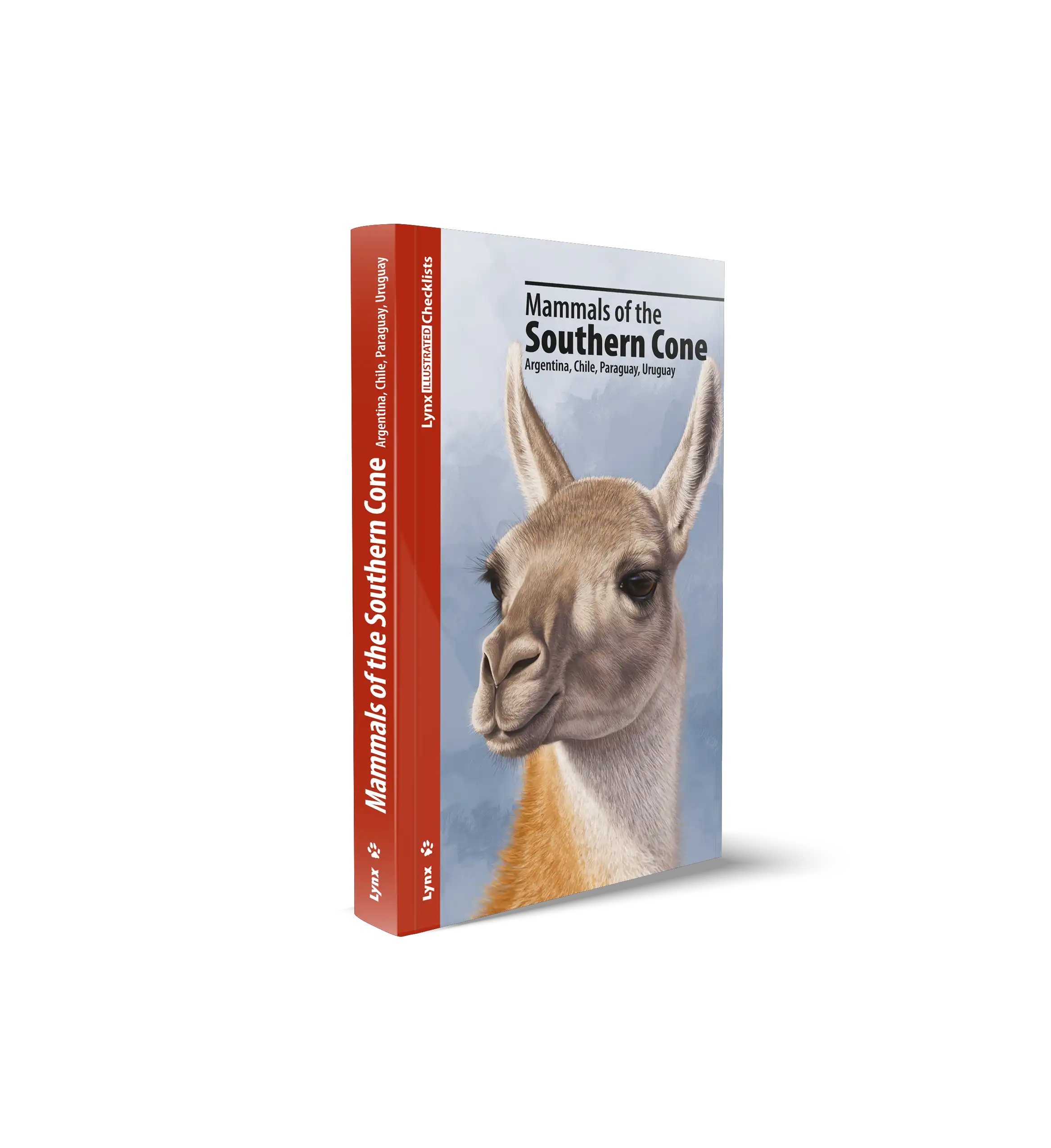
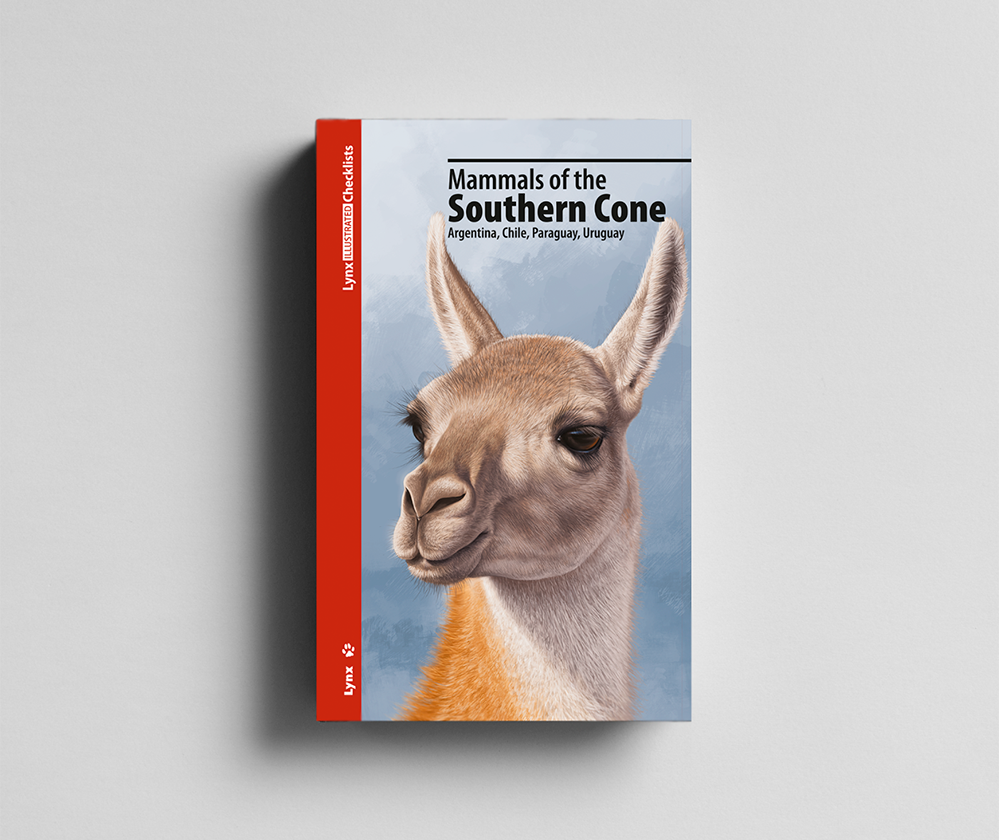
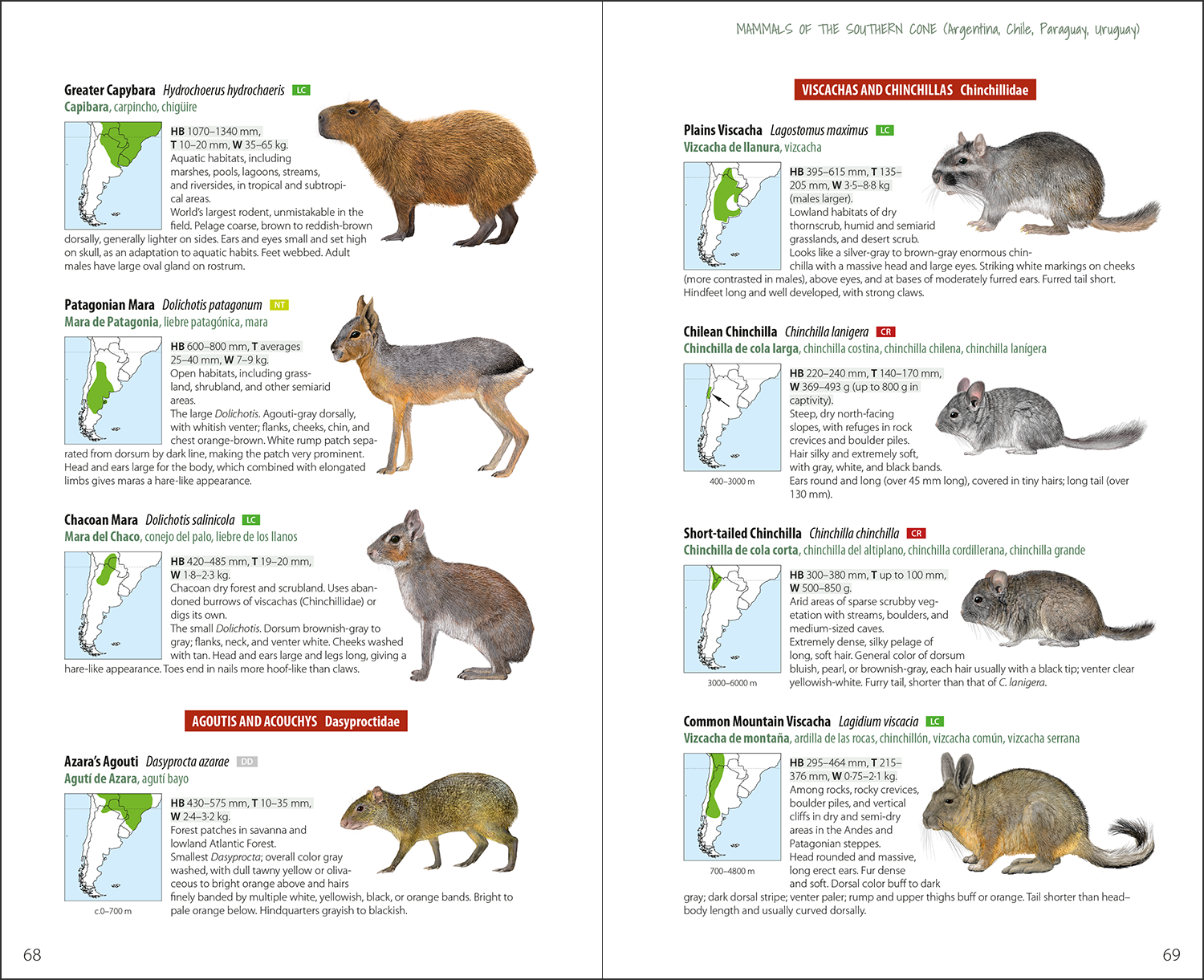
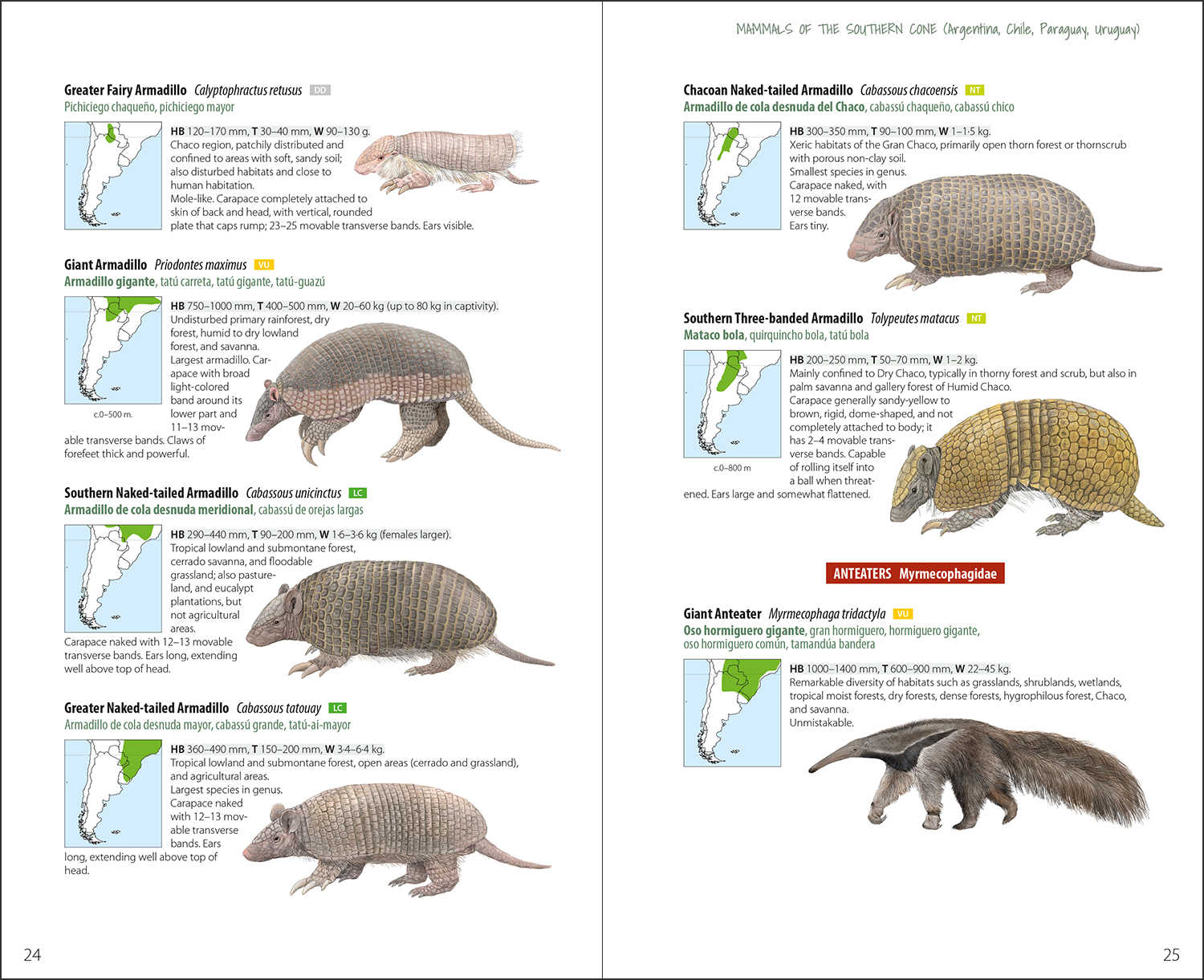
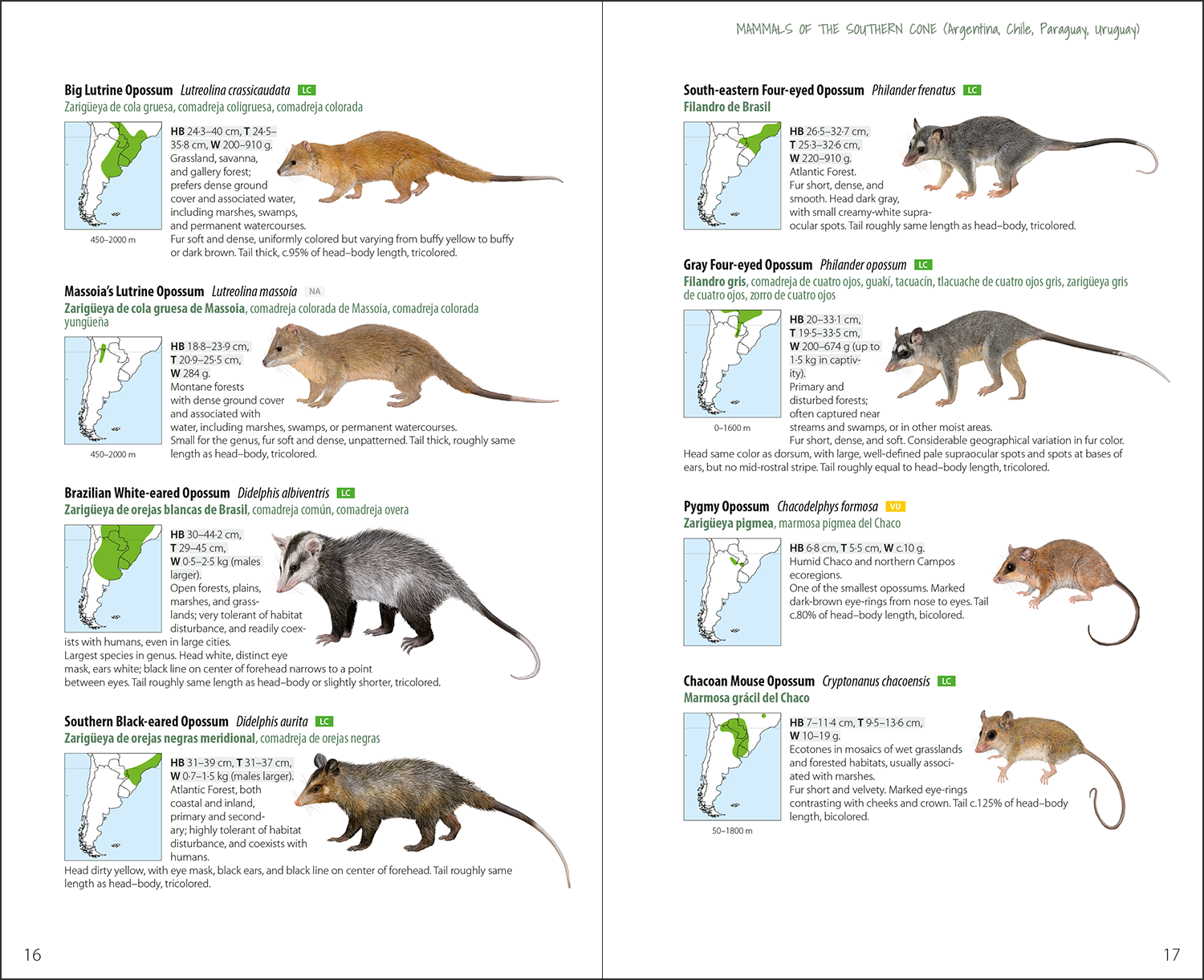
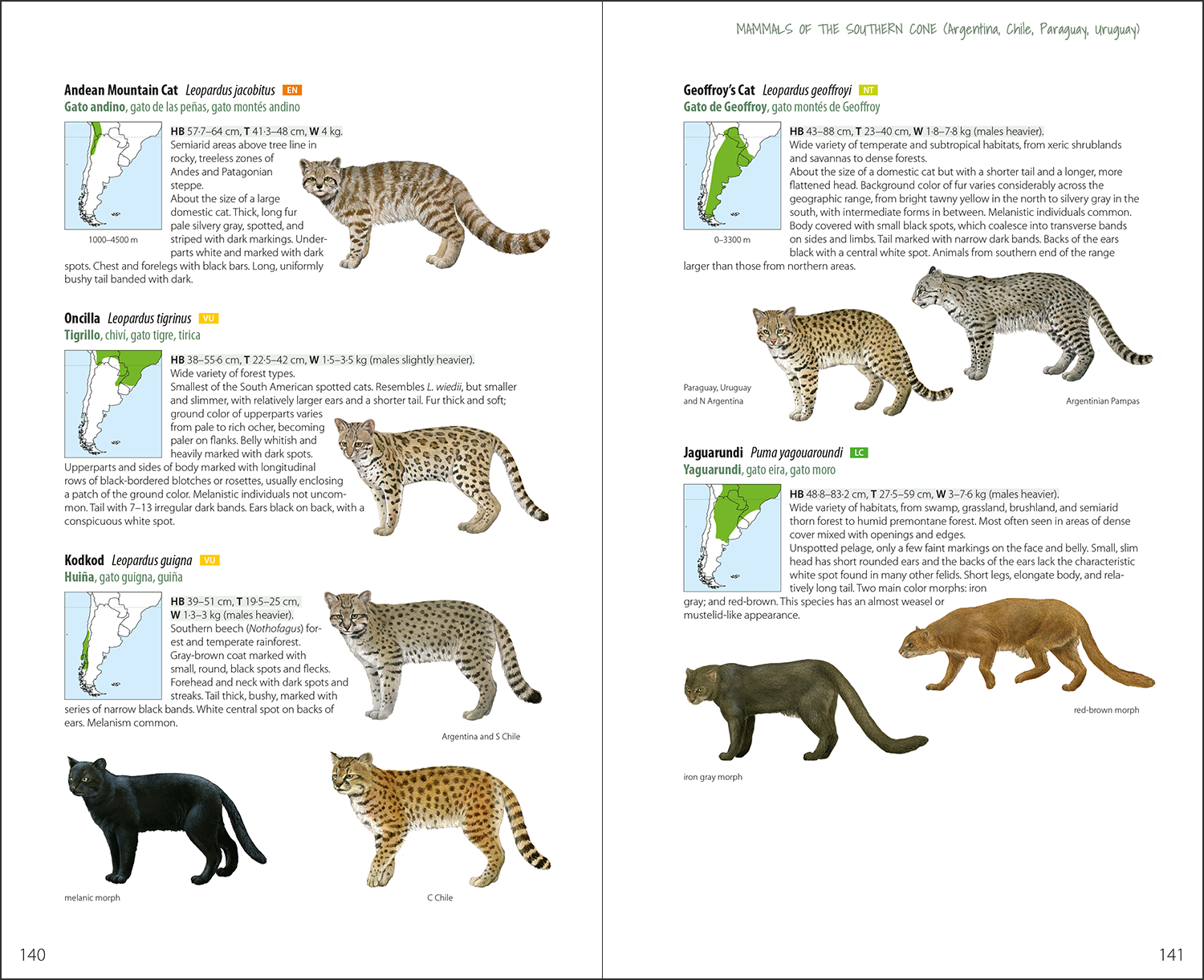
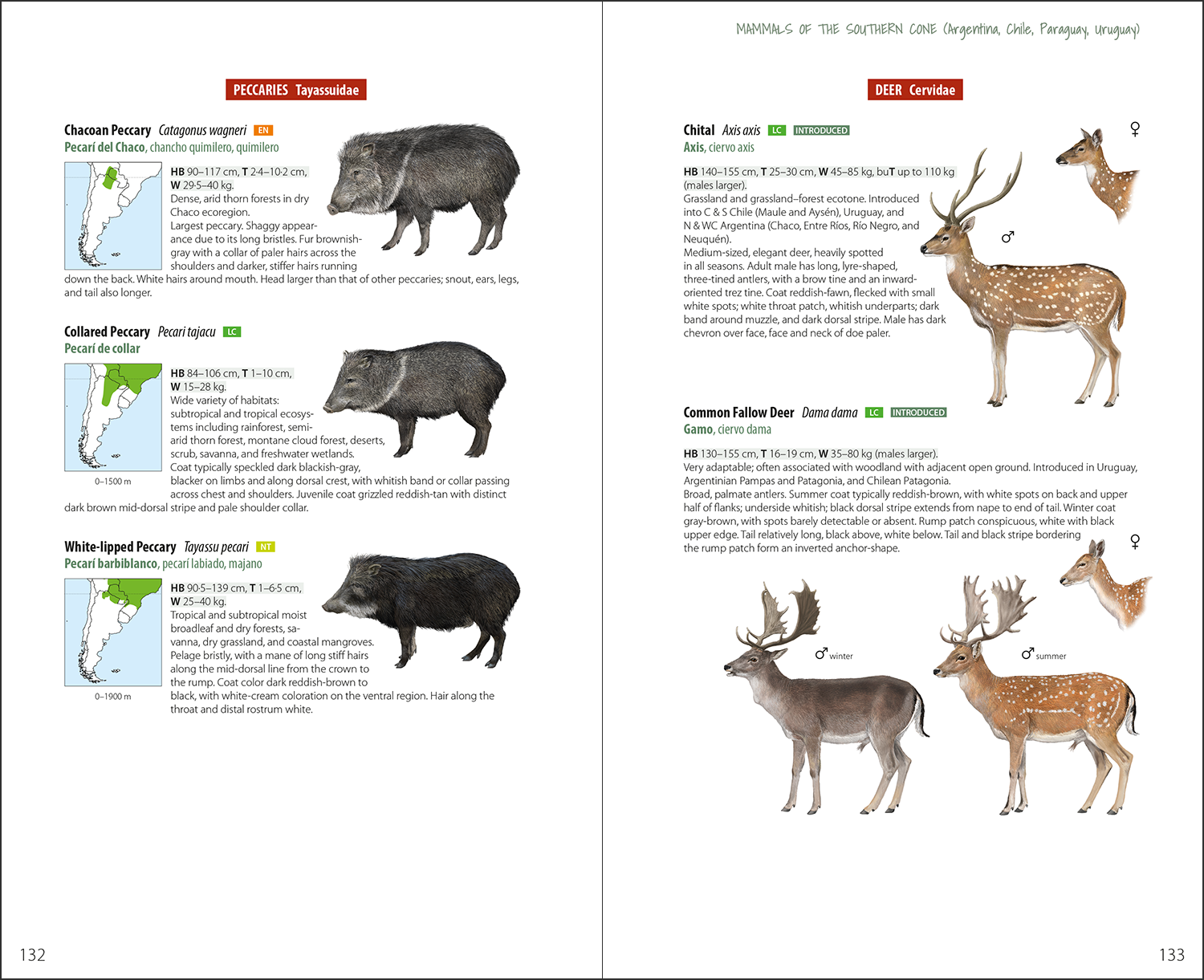
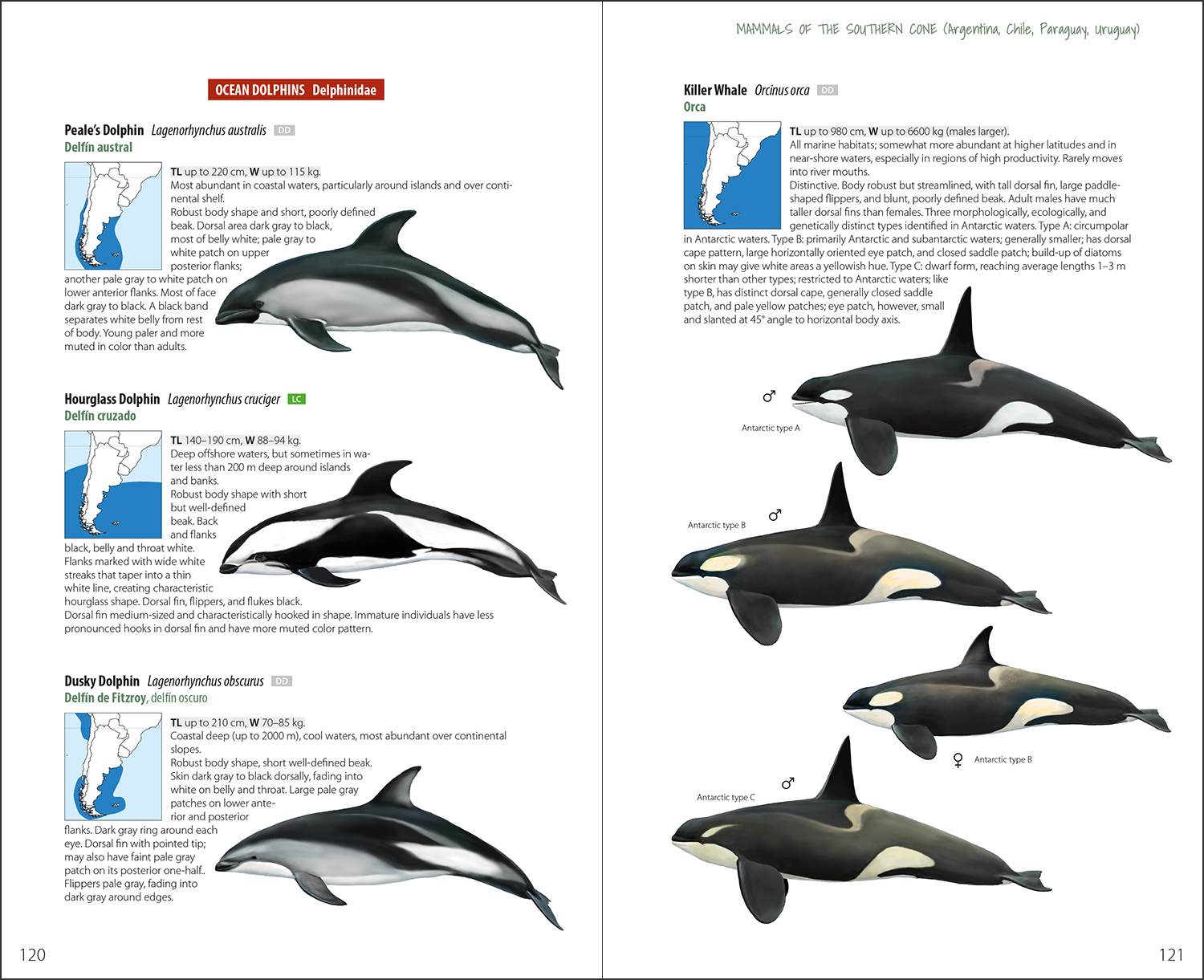
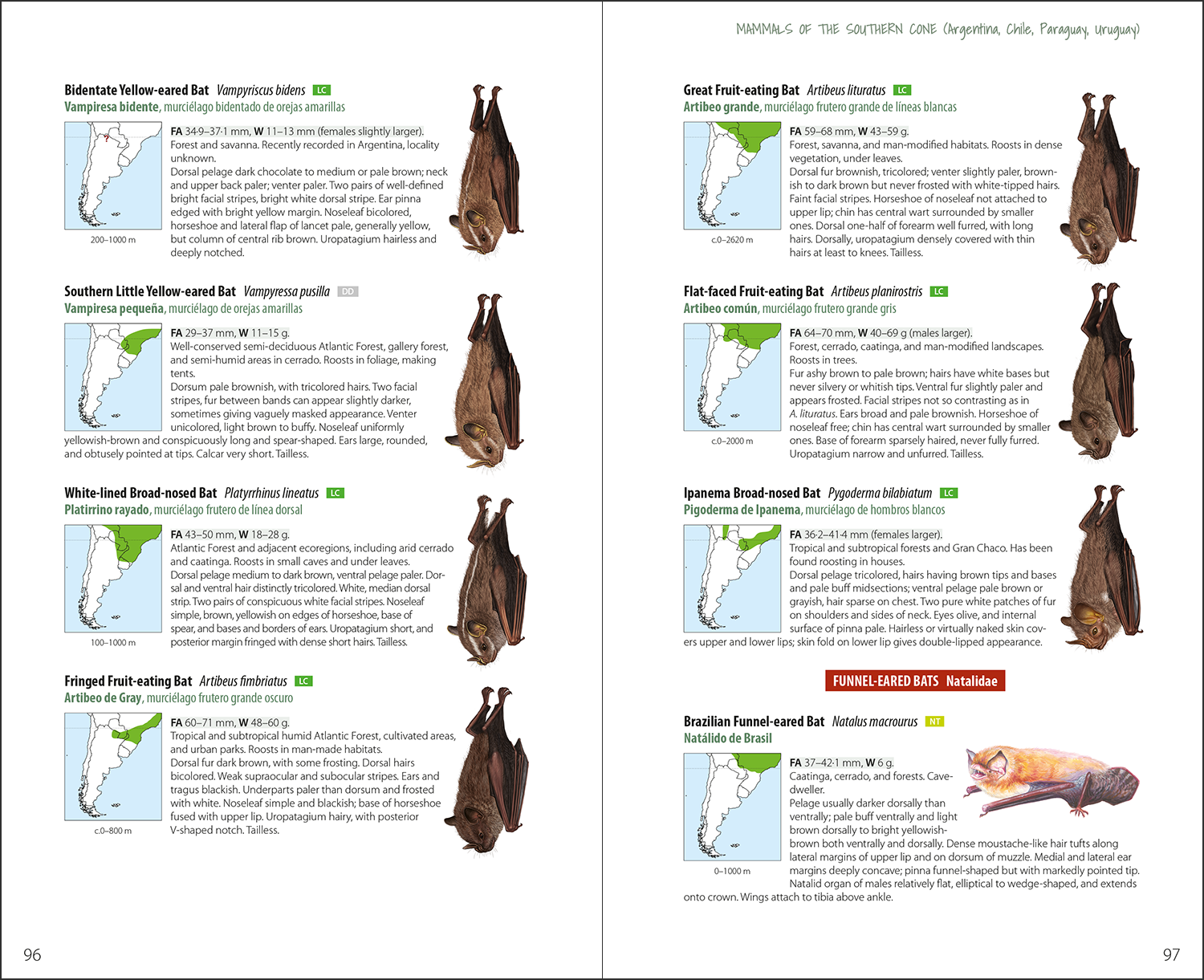
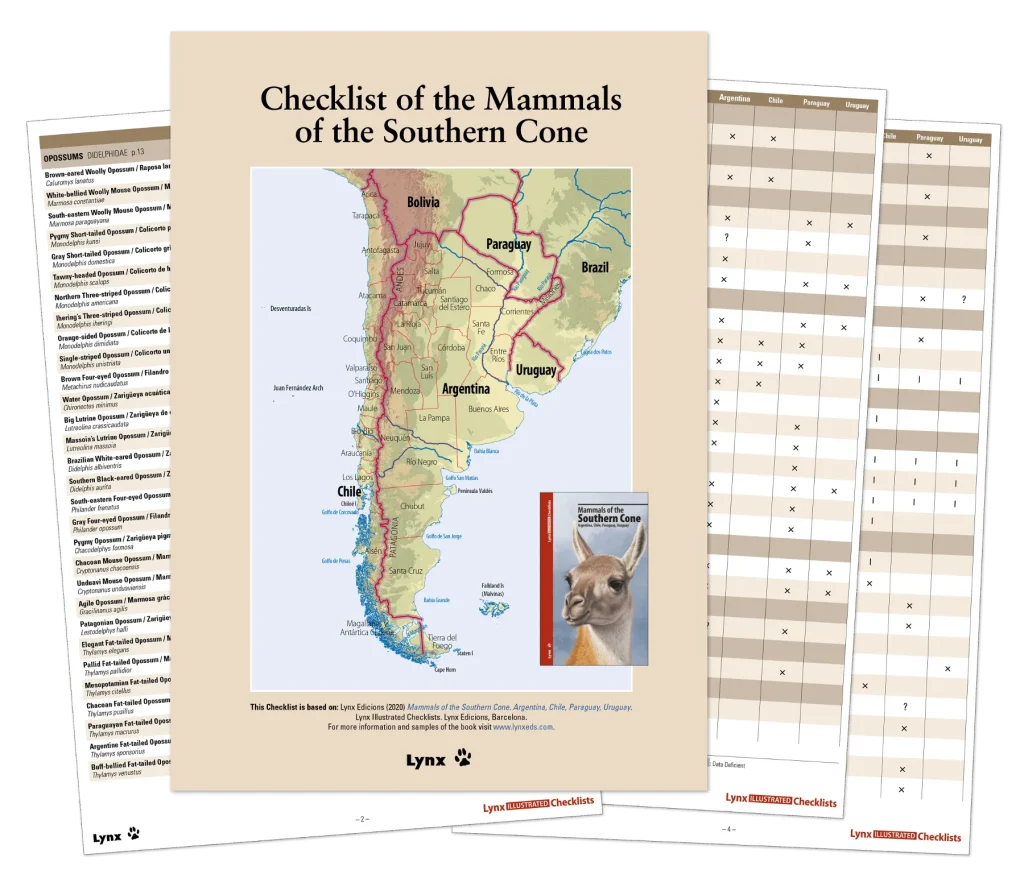
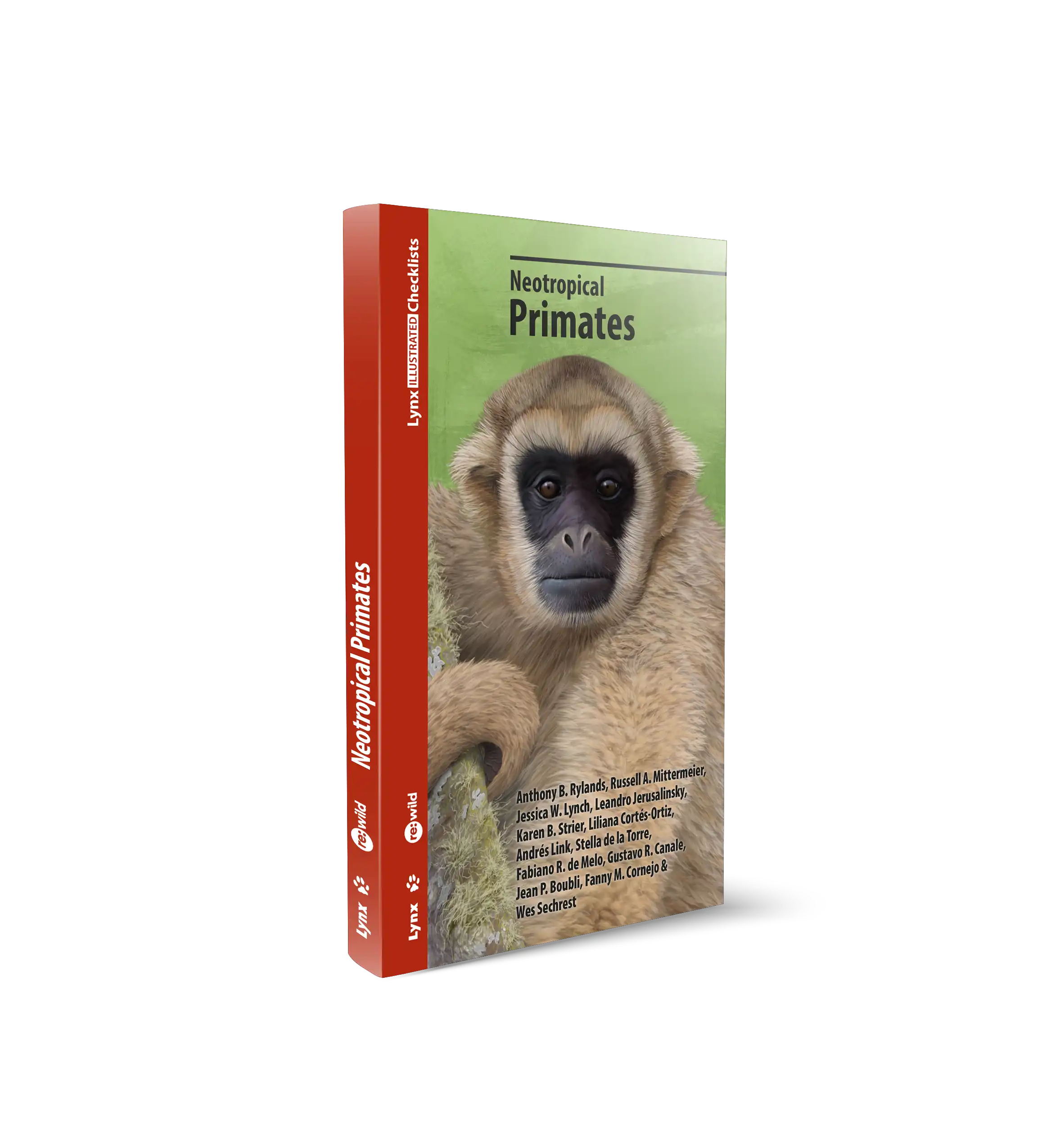
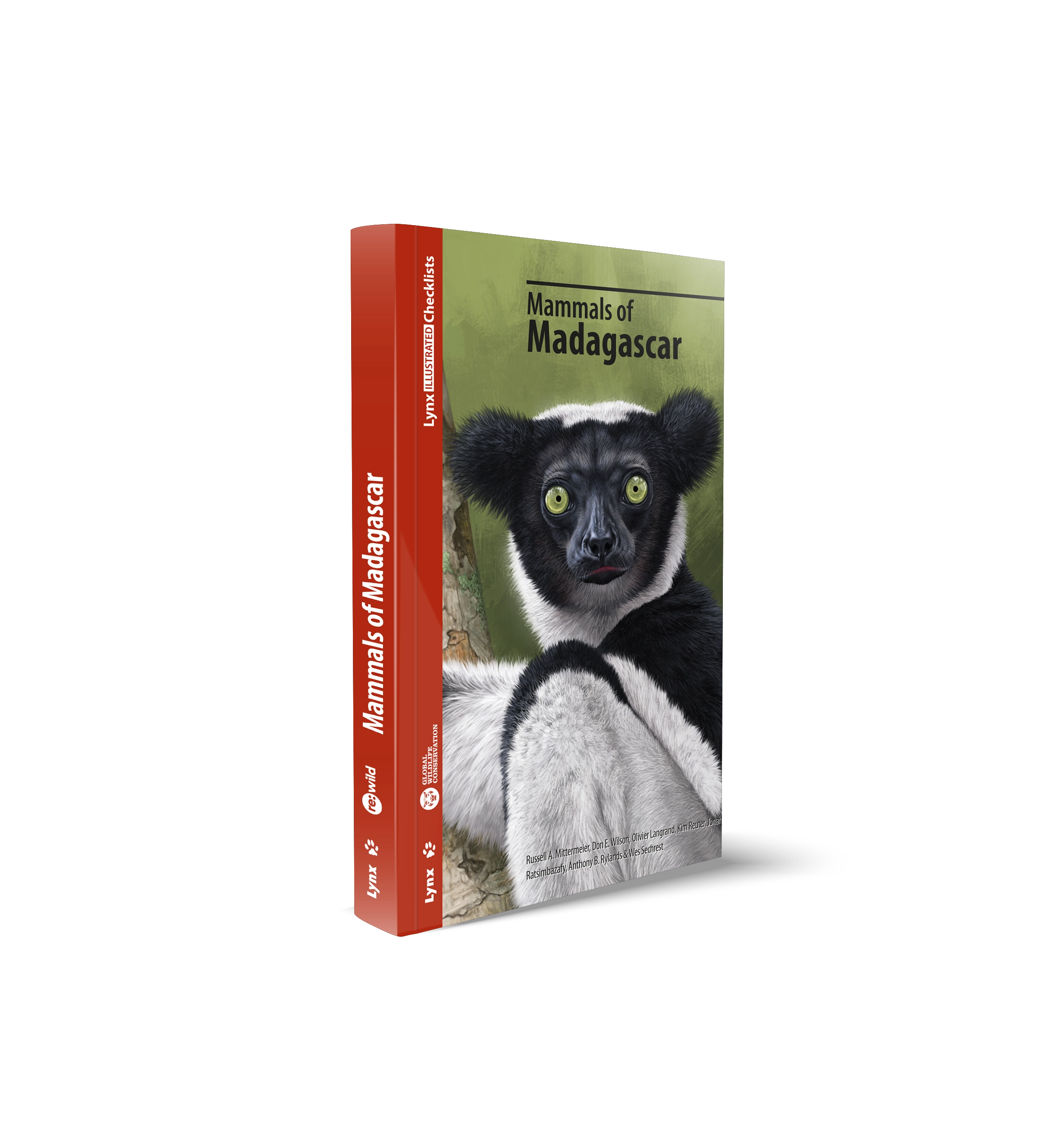
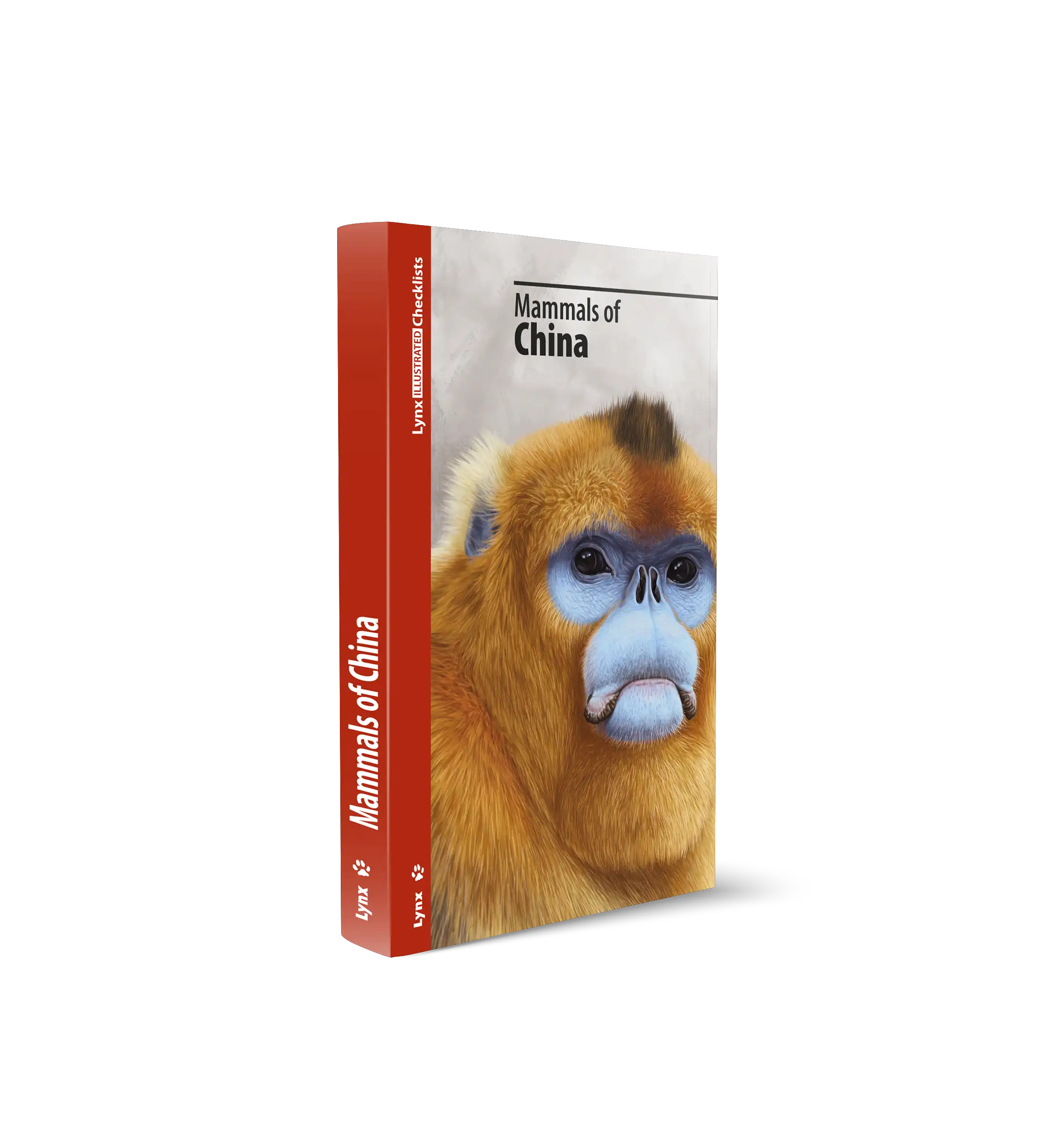
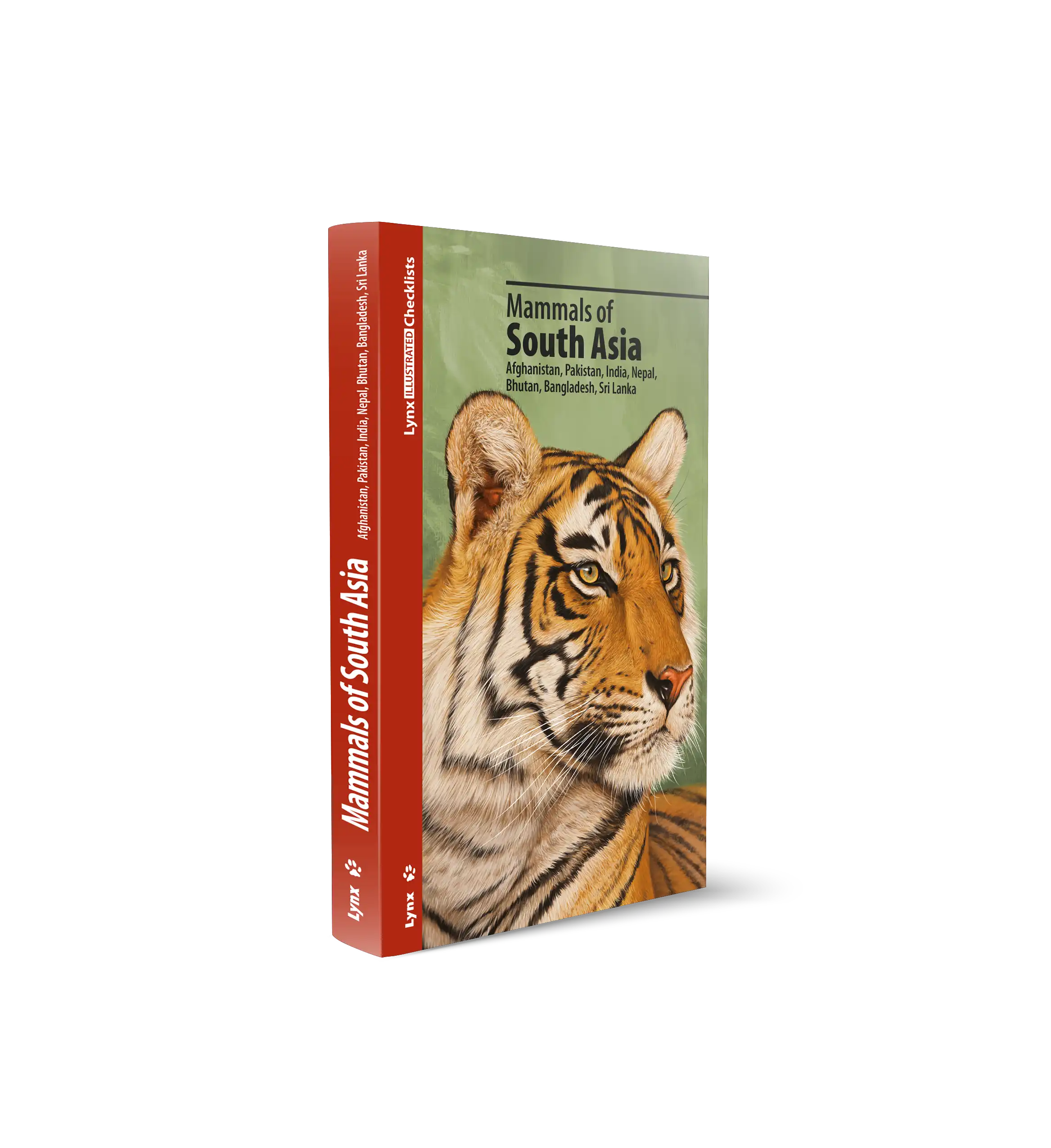
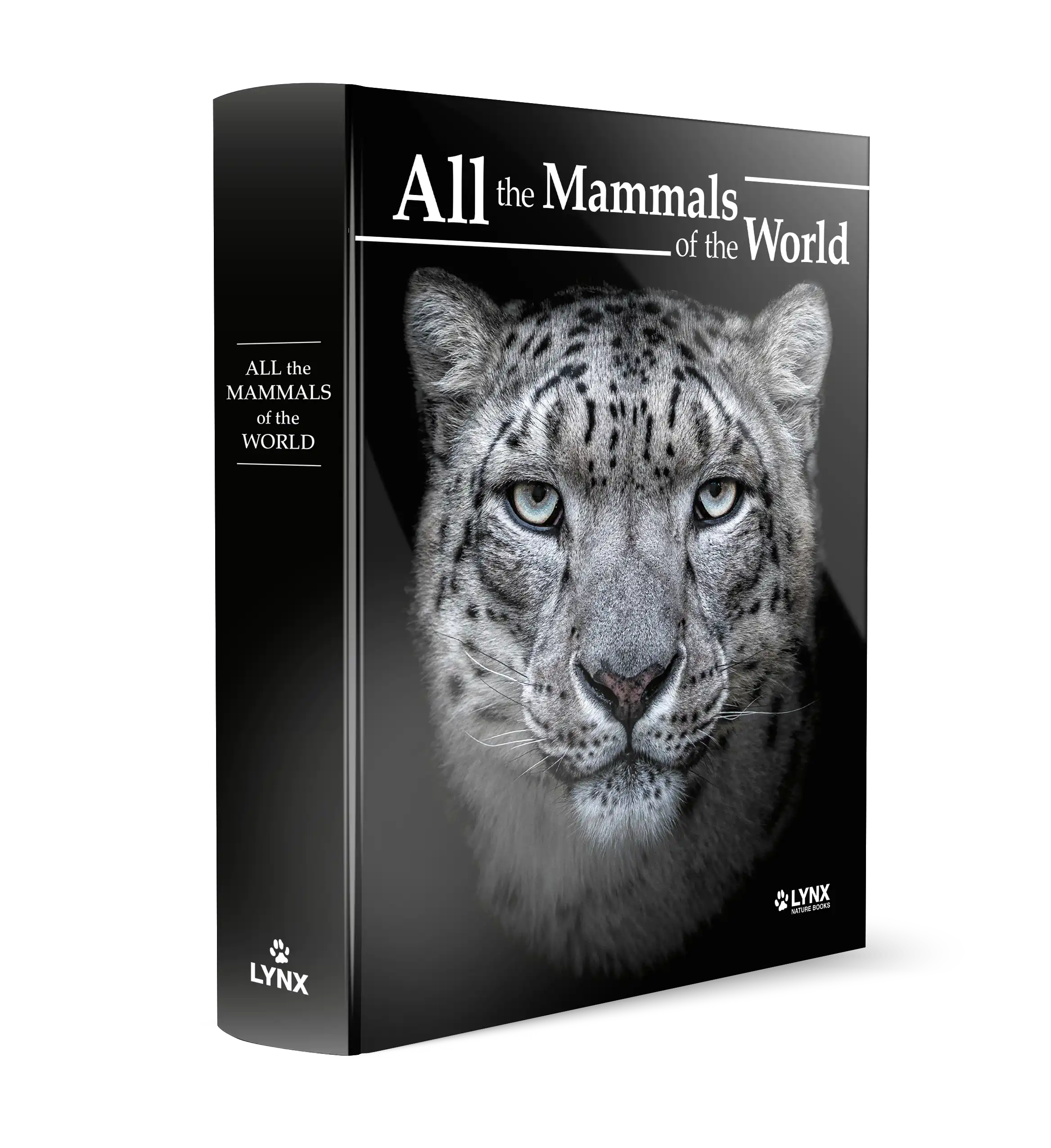

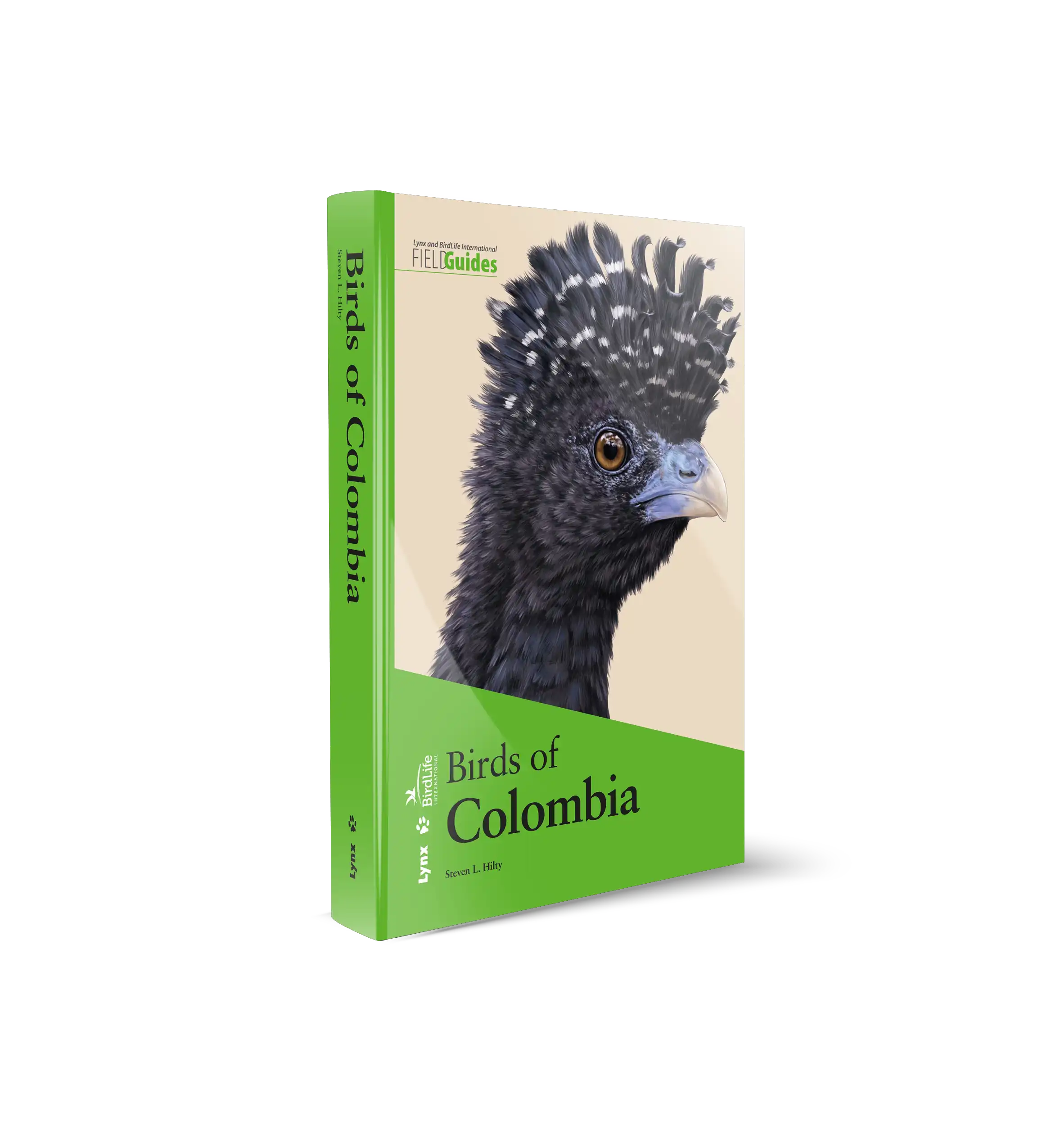
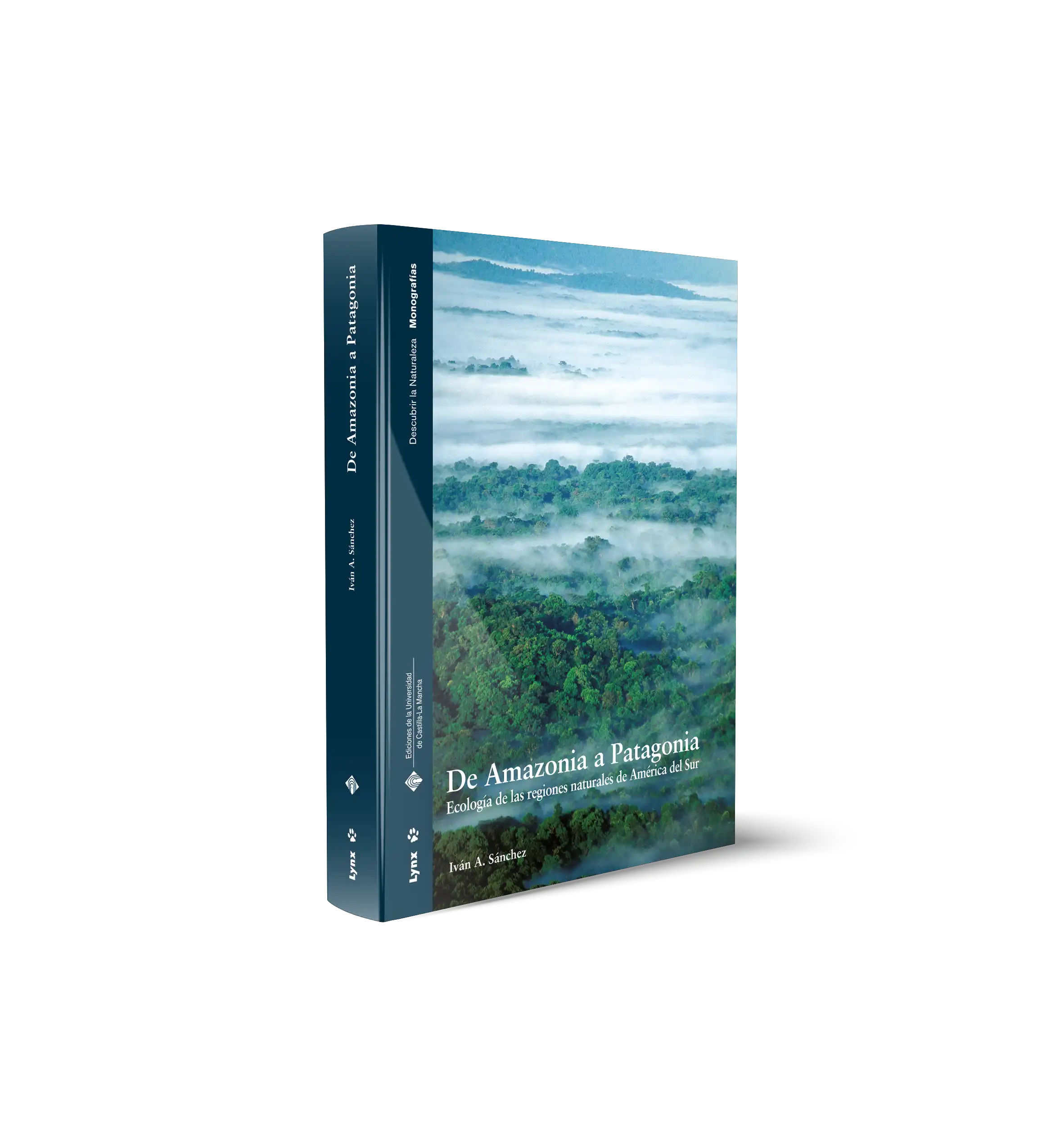

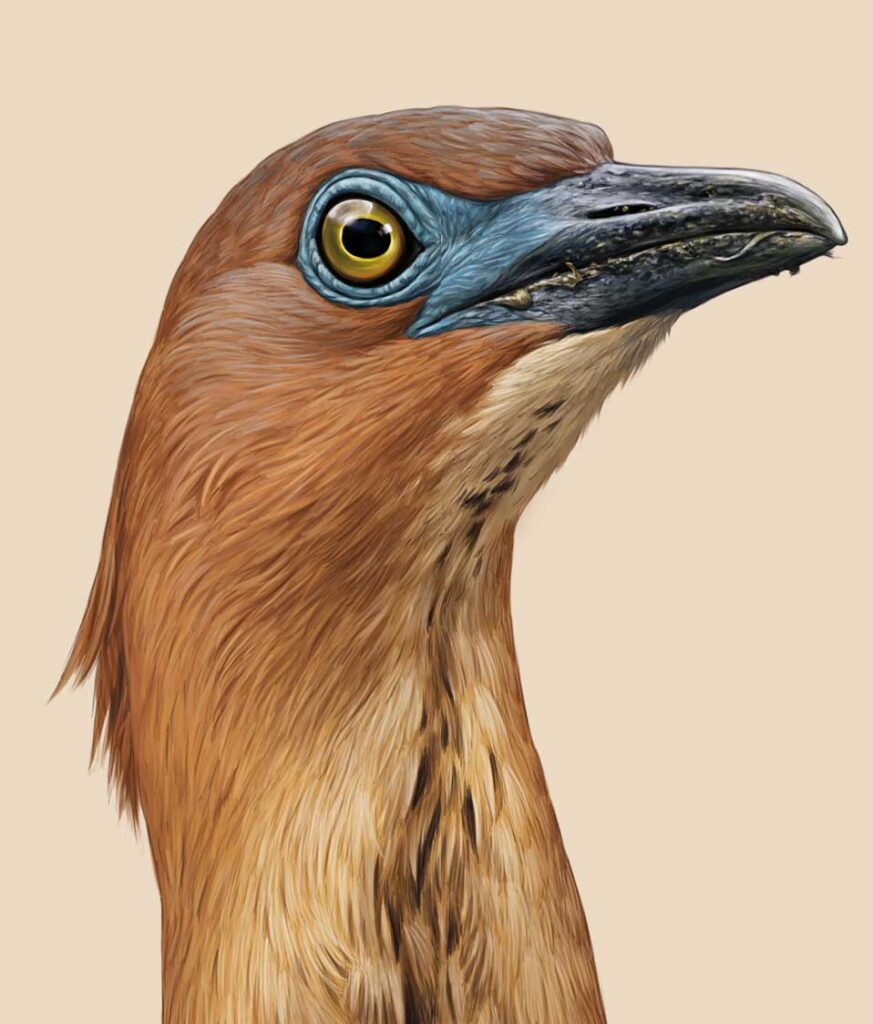
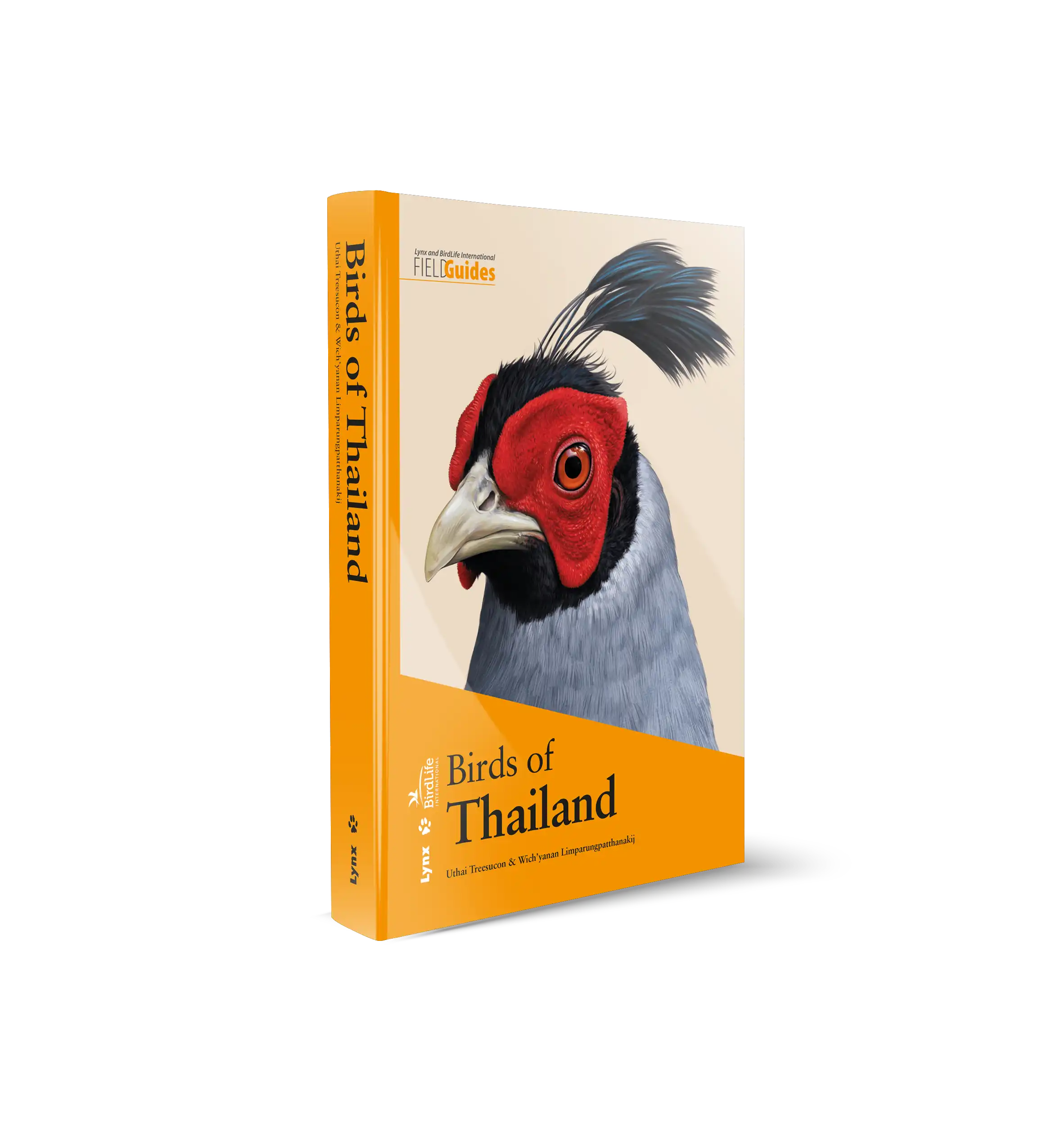
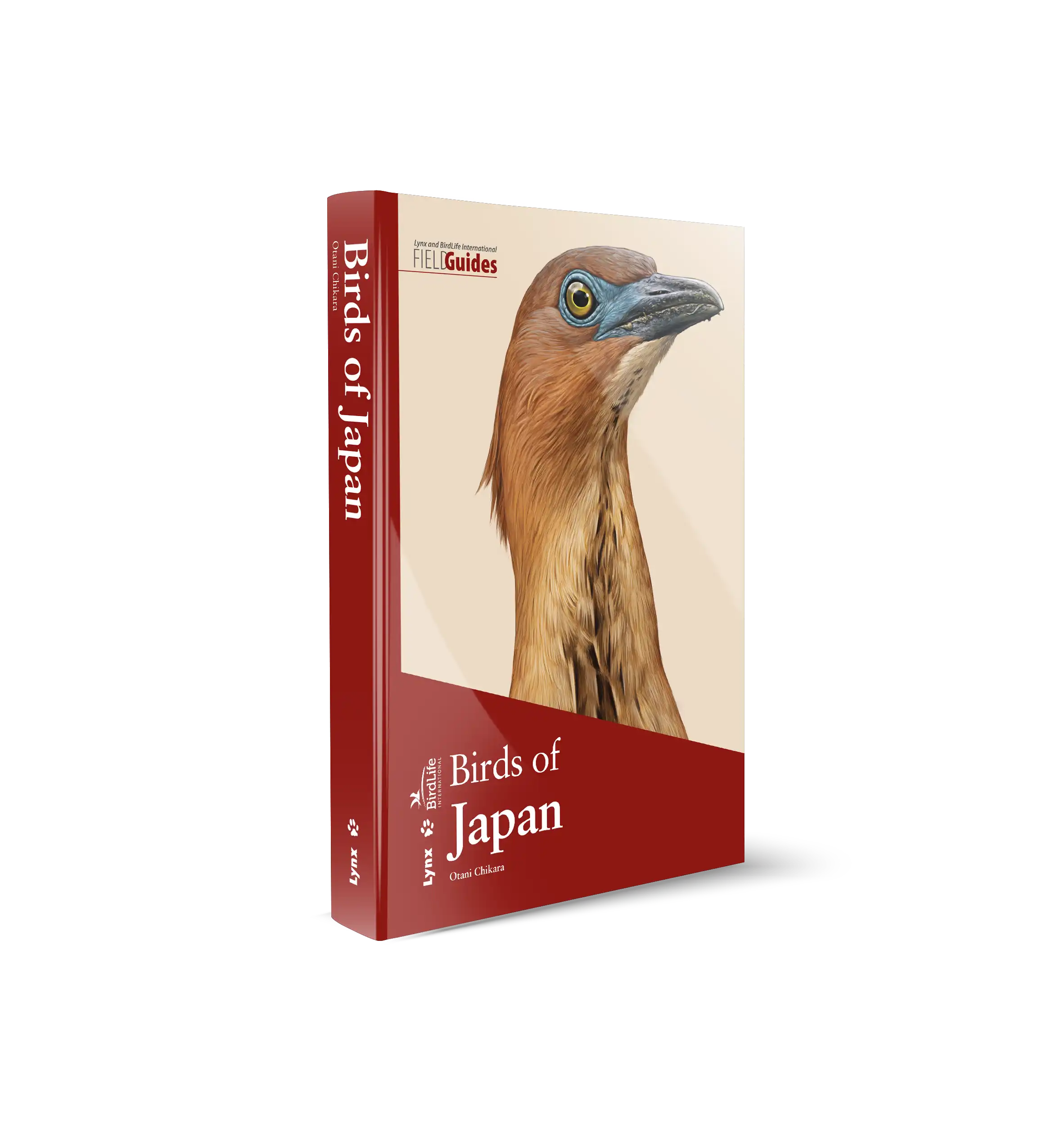








 版权 2025 © Lynx Nature Books
版权 2025 © Lynx Nature Books
Josep Sala Vilarasau –
A very good book. Very handly and useful. A must for every mammal lover and those to travel to that region.
Julien (验证用户) –
Livre interessant qui vaut le mérite d’être édité.
Je pense que 2 choses peuvent être améliorées ou modifiées :
1) c’est une checklist illustrée donc les dessins mériteraient à mon sens d’être plus grand ou en tout cas de prendre une place équivalente au texte voir plus.
2) La description physique des espèce me parait inutile (car le dessin amène déjà cette information). J’aimerais avoir d’autres informations à la place comme le régime alimentaire, dynamique de la population, site principal pour voir l’espèce…
Merci aux éditions Lynx tout de même. Je pense prendre les autres volumes 🙂
GRANGER Michel (验证用户) –
Très bonne initiative que cette approche de l’ensemble des mammifères d’une zone géographique ciblée, ouvrage synthétique très visuel et donc fort pratique (mais je ne le vois cependant pas comme un guide, comme c’est sous-entendu en 4e de couverture : « very handy for the field ».
Petit regret : j’aurais bien aimé trouver les noms français des espèces présentées.
Cordialement,
Michel Granger
Ad (验证用户) –
Great supplement for the Mammals of the World series
Gonzalo Fernández Hoyo (验证用户) –
Excellent spin-off from HMW, superb quality as in all Lynx books. A very welcome surprise are the NEW PRIMATE ILLUSTRATIONS (!) of far better quality than on the HMW Volume 3. Some suggestions for the forthcoming illustrated checklists of this series:
– Larger illustrations, there’s certainly room for that.
– Better grouping of the illustrations per page/family-genus. For instance, hares and rabbits (3 species) are laid out on two consecutive pages, not possible to see all of them at the same time.
– A better format, following the Lynx and Birdlife International FIELD Guides, with Flexicover option.
Bernd Rohrschneider (验证用户) –
This is an excellent book covering every known mammal species in that certain region.
For the forthcoming volumes I would wish additionally mentioned the German and French names (as in the Handbook of the mammals of the world) and at least a short description of the behavior in a few sentences or helpful keywords like nocturnal, arboreal,…
Gehan de Silva Wijeyeratne –
This slim volume marks the first in a new series of illustrated mammal checklists following the completion of the nine volume Handbook of Mammals of the World (HMW); an epic undertaking. This leaves Lynx Edicions in an enviable position amongst publishers by being in possession of illustrations of every extant mammal species in the world together with distribution maps and descriptive content available in a database. This means that they could very easily hive off the material into a series of country level or regional field guides. Does this mean that in the future they will be unbeatable competition for other publishers of mammal field guides? I suspect they will challenge the stablished order, but they will not be unbeatable as different authors and publishers will have their own approach to field guides, each offering something new and different. I recently submitted the text and photographs to John Beaufoy Publishing for ‘A Naturalist’s Guide to the Mammals of Sri Lanka’ which covers 95% of the species in Sri Lanka. I know from that experience that for many species, a single illustration is not enough and for species such as bats it is often necessary to have multiple images showing close ups of anatomical features. However, when you consider the illustrations of what is currently available for regions such as South America, there is no doubt that this publication with illustrations of a high standard and concise but focused text is a hugely welcome addition.
It is interesting they have cautiously labelled the volume as an ‘Illustrated Checklist’. I first visited South America as a student and back packed in Peru for six weeks. In the 1980s, even for birds a modern field guide was not available. The checklist has many of the features of what one would expect from a field guide. The concise text is identification focused with details of distribution, habitat, measurements and a distribution map. The typically single illustration of each species is next to the text which makes efficient use of the space although that is a departure from field guides which often have a facing plate of text. If it had been described as a field guide, it would have been hard to disagree as it ticks most of the boxes for what is expected from a field guide. Arguably, in terms of quality and content it surpasses some field guides I have seen. But billing it as an Illustrated Checklist is a safer description as a field guide should ideally have more illustrations and drawings to tease out identification features for some of the harder species.
There is no author citation in the publication as it is a derivative from the nine volume HMW. However, there is a preface by Don E. Wilson, Chief Editor of HMW and one of the most prolific writers on mammals of recent decades. There are two pages of introduction including a map which shows the countries covered, and were it not for the partial exclusion of Brazil, its coverage would have been effectively all of Southern South America. There is a half of page of text introducing the species account and then you are into the species accounts (pages 13 – 152) followed by just over a page of key references and finally the index.
The arrangement of families, species and genera has been updated from the HMW for a forthcoming publication; an Illustrated Checklist of the Mammals of the World. The updated arrangement has been used in this volume to the 56 families covered. Many of the land mammal families are confined to the New World. As with HMW, the taxonomic arrangement is based on molecular phylogenetics which attempt to discern the evolutionary relationships. There is more than one way to translate evolutionary arrangement into a linear arrangement in a book such as this. But whatever the exact approach taken, it sheds more light on the relationships between families. Thus, because Cetaceans (whales and dolphins) evolved from a land mammal, in this volume the Cetaceans are arranged between bats and camels; (note, hippopotamuses which are absent in South America are the closest living relatives). The eared seals and earless seals which are obligate marine mammals, follow the bears as they are all part of the Order Carnivora.
The region has some spectacular land mammals which are popular with wildlife tourists. A few of them include for example the Giant Anteater, Three-toed Sloth, various primates, Greater Capybara, Jaguar and the Giant Otter. Unfortunately, perhaps ninety percent or more of the land mammals will be small or nocturnal or both. It is generally true of most countries that the majority of mammals are small or nocturnal or both. I am only too familiar with this having lived most of my life on two Islands; Britain and Sri Lanka at temperate and tropical latitudes respectively. Some of the most interesting mammals in South America include the New World marsupials. But most of these species are unlikely to be seen by casual visitors. The family Cricetidae (voles, lemmings and New World rats and mice) contribute 131 species and the bats in several families contribute 74 species. Even very keen mammal watchers will not see many of the mammals as they will require small mammal trapping under research permits. Nevertheless, this is a wonderful book to thumb though and see at a glance the mammal fauna of this part of the world spanning opossums, armadillos, howler monkeys, New World porcupines, pacas, right whale, and Kodkod (a small cat found in Southern beech forests).
The clever use of space means that 486 species are covered in a very slim book which is lightweight. This makes it suitable to be packed in for a visit even if the prime focus of a visit is a birding tour. Its portability and affordability will hopefully ignite a further interest in the study of mammals by naturalists resident in the region who previously have not had a resource of this quality and authority. I suspect there will be a market for the publisher to use this format and page size for an illustrated checklist for the birds of South America as well.